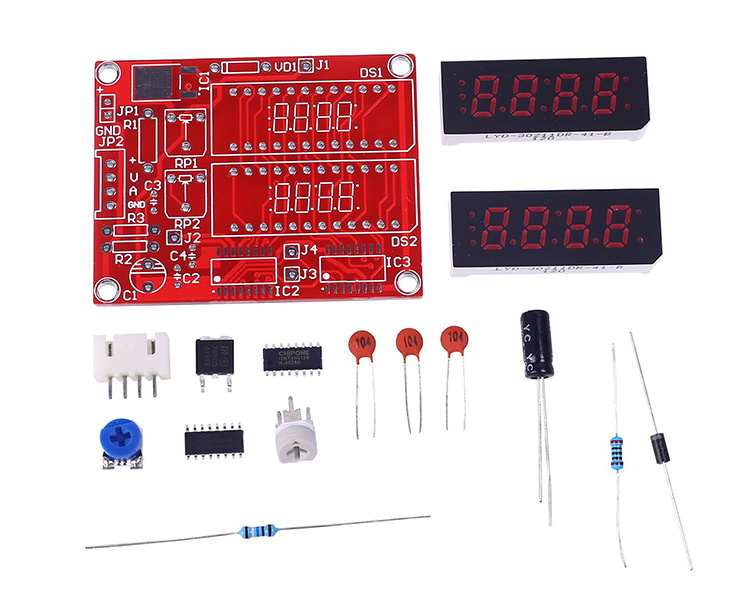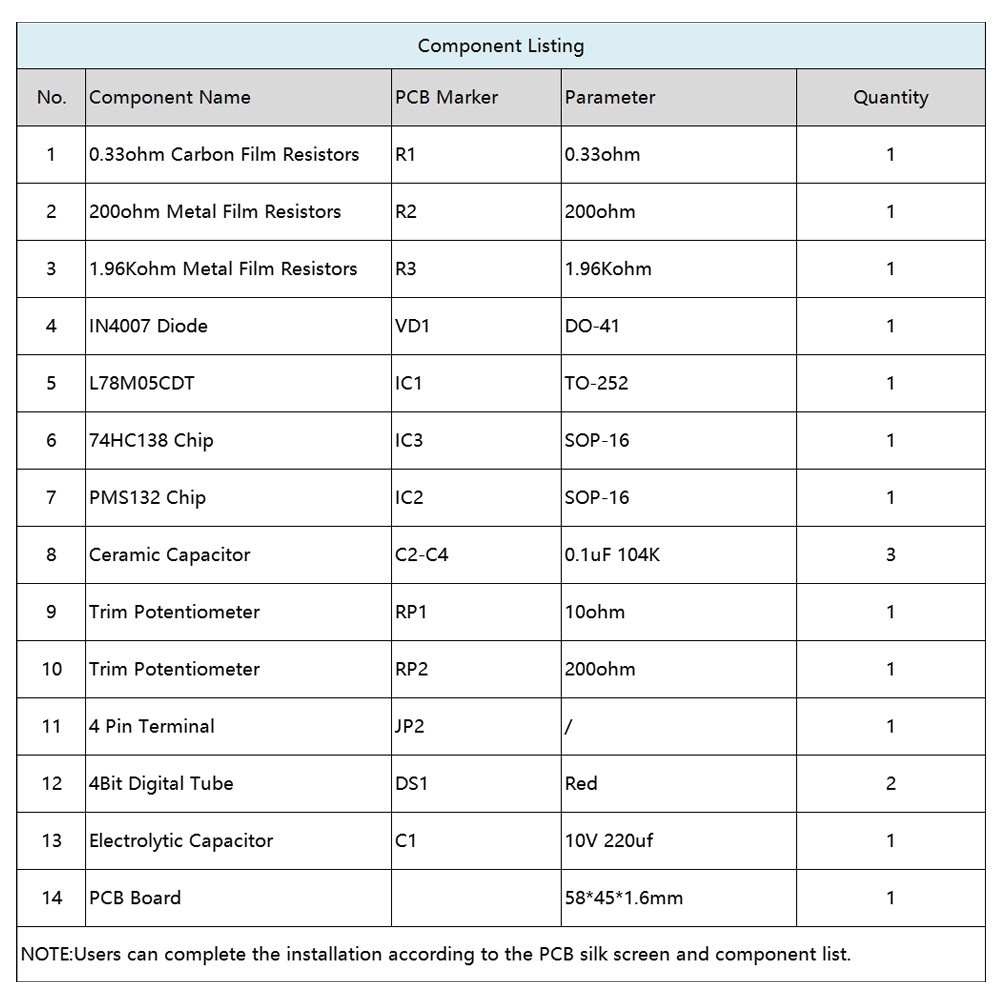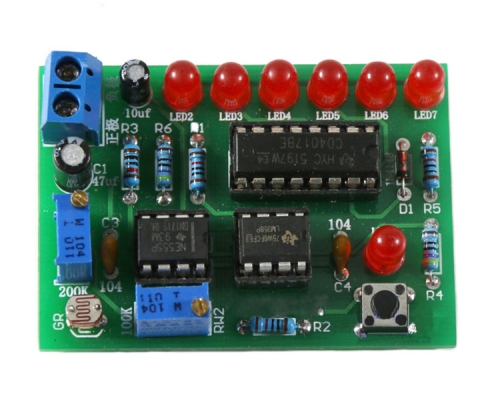DIY Digital Voltage Current Meter Soldering Practice Kit
Product Details
1.Description:
It is a voltage and current meter diy kit. It can be used as a commonly used digital voltage and current meter.
2.Feature:
1).The voltage range of 2.4-5.5V can work.
2).The circuit design is advanced and practical,and the price is extremely high.
3).It is developed with a new type of single-chip microcomputer and has powerful functions.
3.Parameter:
1).Product Name:Voltage and Current Meter
2).Working Voltage:DC 2.4V-5.5V
3).MCU:PMS132B
4).Work Temperature:-25℃~85℃
5).Work Humidity:5%~95%RH
6).PCB Size:58*45*1.6mm
4.Circuit principle:
1).The core element of the circuit is the single-chip microcomputer PMS132B with analog-to-digital conversion function.JP1 in the circuit is the external power supply terminal.The external power is sent to the three-terminal 78M05 stabilized voltage through VD1 to provide the circuit with a 5V operating voltage.
2).The measured voltage is input from the 2nd pin of JP2,and after R1,RP2 and R2 form a series voltage divider,it provides a voltage sampling signal for the 14th pin of the chip IC2.
3).Extend the voltage measurement range by 11 times (0-30V).If the measured voltage is not lower than 5V,and the load capacity is not high,you can short-circuit the pad HP2,so that JP1 is not connected to a separate power supply.The voltmeter became a "two-wire system."
4).The measured current is input from the 3rd pin of JP2.Normally,HP1 needs to be short-circuited,so that the measured current will pass through R1 and RP2,and the formed voltage will be sent to the 15th pin of IC2 for measurement,and the current value is calculated.
5).If used for current measurement of self-recovery precision regulated power supply,R1 does not need to be installed because the current sampling resistor has been installed.














